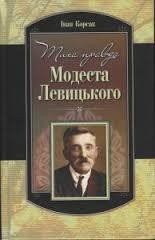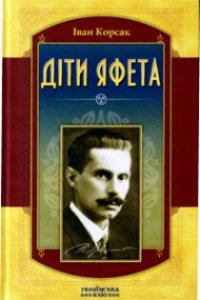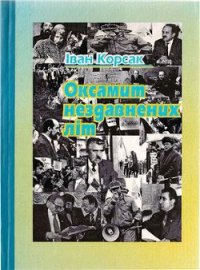Імена твої, Україно - Корсак Иван Феодосеевич "Korsak" (книги читать бесплатно без регистрации TXT) 📗
described the geopolitical situation of the current Polish-Muscovy War, 1632-34, fought
over possession of the Russian city of Smolensk.
On his return to Poland in 1634, Niemirycz fought in the victorious campaigns against
the Russians and, in 1635, against the Swedes, whose military power had been eroded by
the Thirty Years’ War. Favorable treaties having been signed with Russia and Sweden, the
Polish-Lithuanian Commonwealth entered a short period of peace and prosperity.
With a political career in mind, Niemirycz started to look for a wife. He considered
marriage to a Roman Catholic, but in 1635/36, to the delight of Polish Brethren officials,
he married the Calvinist Elzbieta Slupecka, who gave him valuable family connections to
Protestant magnate families such as the Leszczynskis, Firleys and Potockis. In 1636 the
Kijуw nobility elected him a deputy judge to the Polish Supreme Court (Trybunal Koronny)
in Lublin, where he presided over an Arian-Roman Catholic theological disputation
between Krzysztof Lubieniecki and the Jesuit Kasper Druzbicki. His performance as judge
must have pleased the nobility, for in 1637 they elected him member of parliament from
that region, a post to which they returned him for many years.
During the first decade of his political career Niemirycz concentrated on defending
the Polish Brethren from growing Catholic intolerance. In 1638 he tried in vain to stop
Parliamentary proceedings against the Rakуw Academy. When it was ordered closed he
signed a legal protest against the judgment. He was also one of the petitioners of the 1638
Kisielin gathering which wrote to the Calvinist duke Krzysztof II Radziwill, requesting aid
and protection for the Polish Brethren.
Polish-Lithuanian Territory in 1648
Niemirycz maintained the Arian church in Czernichуw founded by his father and
grandmother, where the ministers were Piotr Stoinski (1610-1649) and Jerzy Ciachowski
(1652-1661/62). He also established and supported an Arian church in Uszomir, where he
founded a school and put the Dutch refugee Izaac Volger in charge. In 1643, after acquiring
extensive lands south of Kyiv on the eastern bank of the Dnieper River, he installed Andrzej
Wiszowaty as minister there, that he «might preach the Gospel to Scythians and other
peoples, following Saint Andrew». Niemirycz employed many Unitarians, encouraged
them to settle on his estates, and recommended them to other magnates, including tolerant
Roman Catholics. His wealth allowed him to become a patron of the denomination.
Numerous books and tracts were dedicated to him. He also enjoyed holding theological
disputations among Arians, Catholics, and even the Orthodox.
In the late 1630s and 1640s Niemirycz enhanced his family fortune, which had the effect
of supporting the Polish Brethren. He managed all of the family estates until 1648 when
his brothers received their portions. Jerzy chose Horoszki as his seat. Through acquisitions
and donations his possessions grew to include 14 cities and 50 villages with 7600 serfs. By
1648 he ruled the second largest domain in the Ukraine. The ways in which he acquired
new estates were not always peaceful and legal. For example, in 1640, following the death
of his aunt Aleksandra Hojska, he and his brothers raided and pillaged Hoszcza, at the same
time reintroducing the Arians expelled from that city earlier. In the next years he attacked
the estates of his cousins; in 1650 he was raided in turn by his own brother.
253
Despite being chosen as a member for nearly every parliament held, Niemirycz’s
political fortunes did not prosper. In 1641, when he was chosen chamberlain of Kyiv
(podkomorzy kijowski), his Roman Catholic friend and protector Stanislaw Koniecpolski
said that he might have been nominated to the Senate «if his faith did not stand in the way».
On this occasion, in his Arian pride, Niemirycz went too far. When about to be installed
as chamberlain, he was asked if he was ready to swear by the Trinity. He replied that he
would swear not only by a Holy Three, but also, if needed, by Four. This witticism led to
a lawsuit for blasphemy that dragged on for years before it was quashed in 1645 by his
relative, Andrzej Leszczynski, and the Roman Catholic bishop of Kijуw. This episode did
not endear Niemirycz to the Roman Catholic nobility. In 1646 the Supreme Court ordered
him to close down all the Arian churches in his estates, to expel his fellow Brethren, and to
pay a fine of 10,000 zlotys. Like other Arians, he ignored the ruling.
Niemirycz fled his estates in the Ukraine and attended the Diet in Warsaw. King
Wladyslaw (Ladislas) IV Vasa had died and the nobles met to choose a successor. Niemirycz
and his Protestant allies campaigned for the Calvinist Sigismund of Transylvania, whom
they hoped would grant religious toleration. Initially refused admittance to the Diet because
he denied the Trinity, Niemirycz was let in after he claimed that he came to talk politics
and not religion. Although not given permission to speak in the drafting of the articles of
confederation, he was nominated to a council to aid the regent. After an ex-Jesuit cardinal
was crowned King Jan II Kazimierz Vasa (John Casimir), Niemirycz began seeking favor
and protection at the Transylvanian court. He took part in warfare against the Cossacks,
but advised moderation and tried to explore settlement with them.
Niemirycz returned to his estates in the Ukraine in 1649, but after the Cossacks
defeated the Polish army at Batik in 1652, he was forced to resettle in Wolyn (Volhynia).
He became disillusioned with the new Polish king, who in 1654 failed to prevent the loss
of the Ukraine to Russia. Thus, in 1655, when the Swedes invaded Poland, Niemirycz
threw himself wholeheartedly into the Swedish camp. He led the delegation that petitioned
Swedish king Charles X to restore civic and religious liberties to Polish Protestants,
including the Polish Brethren. While the king expressed sympathy, he declined to officially
endorse toleration for fear of offending the majority Catholic population. This did not
dampen Niemirycz’s pro-Swedish enthusiasm. He served in the Swedish army and wrote
letters to dignitaries urging them to submit to the Swedish King. These letters, widely
circulated in Poland, not only harmed Niemirycz’s reputation, but also incited resentment
and retaliation against the Polish Brethren. Catholic resistance to the Swedes made an
especial target of Arian nobles and congregations, whose populations were decimated and
scattered. The embattled King Jan II Kazimierz, rallying popular support, vowed to banish
the Arians from the Commonwealth. In 1657 Niemirycz, hoping to restore his fortunes and
perhaps those of the Brethren, negotiated a treaty to partition Poland among the Cossacks
under Chmielnicki, Sweden, and Transylvania. This was regarded as plain treason.
When the Swedish invasion receded, Niemirycz returned to his estates in the Ukraine,
which had been restored to him by Khmelnytsky, and sided there with a Cossack faction
opposed to Moscow. He worked tirelessly to design and promote the Union of Hadziacz,




